Diversity makes the farm go round
posted on
December 30, 2018
We raise beef, pork, lamb, chickens, turkeys, AND eggs.
Wow. That's a lot! Yes...yes it is. Why do we have so many different animals?
Well, aside from providing a variety of family favorite meats to our customers, our diverse menagerie of animals fulfill a variety of needs on our farmland. From the food they eat, to the nutrients they release, each type of animal has something unique to offer that can improve the health of the land and our customers.
Sheep and Lamb
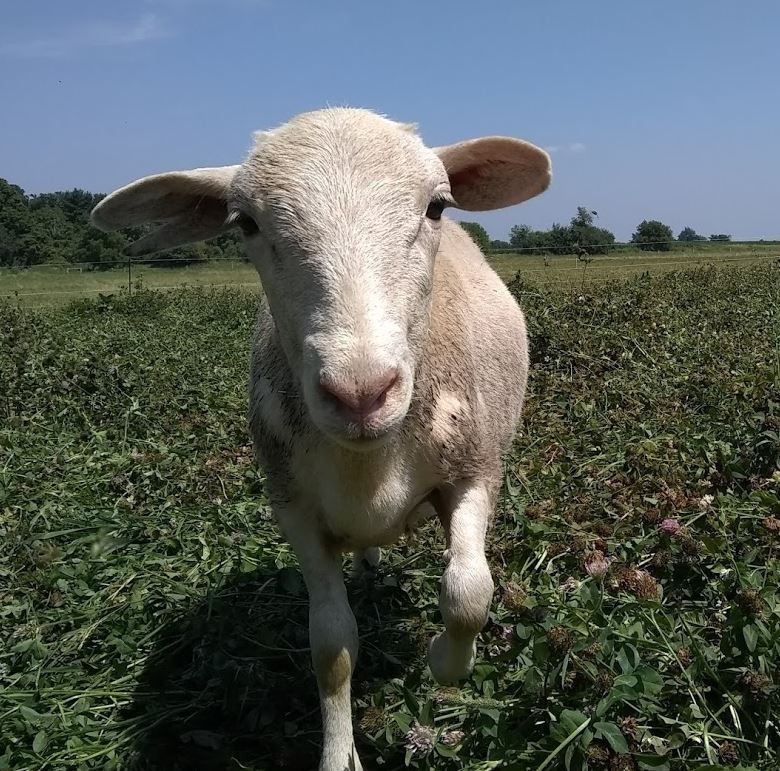
The sheep on our farm are charismatic and delightful to be around, in and of themselves. But they also have a lot to offer, aside from high quality, flavorful, and lean meat.
They, like the cattle, are ruminant animals and naturally eat grass. We respect this, and keep our flock 100% grass-fed. Like our cattle, we feed the sheep hay in winter until they can be on pasture again.
The sheep are smaller, with ewes averaging about 150 pounds, and so, are much lighter and gentler on the pastures. Because they're smaller, they can handle some of the wetter parts of the pasture without damaging the soils like heavy weighted cattle might.

The sheep, too, are rotated across the pastures to spread their manure and keep them grazing top quality forage. This builds up the soil and promotes their own health, too.
Despite being out in the same pasture, the sheep and cattle do not quite eat the same thing. The sheep tend to prefer eating the broad leaf weeds and short grasses that cattle do not. They are far less picky than cattle and can graze the entire plant stem closer to the ground. When the two species graze after one another, the pasture forage is consumed most efficiently.
Beef Cattle
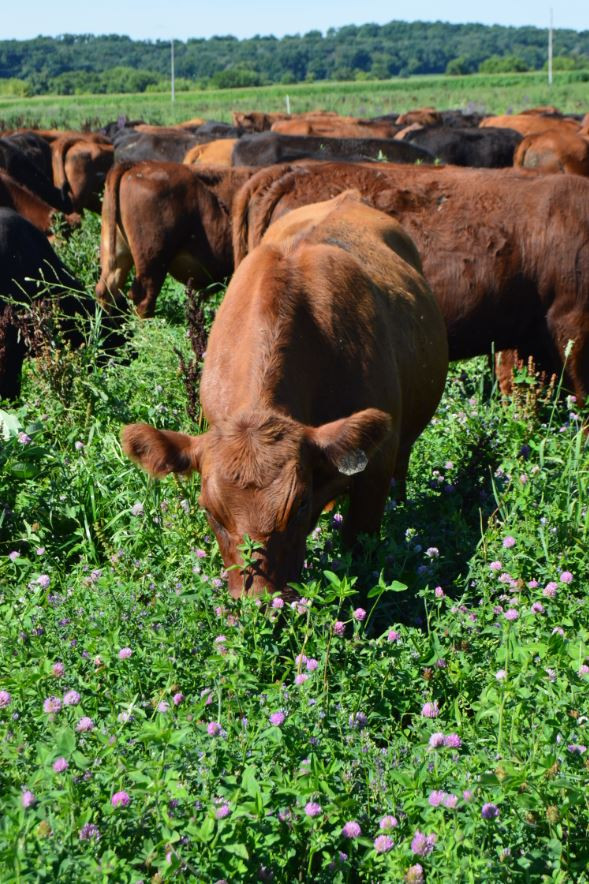
Our cattle rotate across our pastures, grazing small areas with high intensity each day. Their frequent, concentrated movement across the pastures helps to promote intense plant growth over the 30-45 day rest period each paddock receives after the day's grazing has passed.
The constant movement of the herd keeps their manure spread naturally, too, helping to fertilize and facilitate the breakdown of the nutrients right away.
The rest period between grazing allows abundant plant regrowth, which in turn, provides habitat for nesting birds, small mammals, frogs, insects, and more while the cattle graze a different section of pasture.
The cattle graze the taller grasses the sheep like less and they graze the land quicker than the sheep can, thus keeping plants from over-maturing and becoming less nutritious.

Cattle will also trample down some of the forage in their paddock with their hooves. They, then, do not eat that trampled forage, which sounds wasteful, but, is actually quite a good thing. This remaining forage, mixed with the cattle manure, is broken down and incorporated back into the soil, returning an even greater amount of nutrients back into the soil than what would have been in the manure, alone.
As the grazed pasture plants regrow again, they take carbon out of the air (or sequester) it in the form of productive underground root systems and replenished above ground plant material.
The constant cover of plant material in the pastures helps prevent erosion and runoff during heavy rain events, too.
Chickens, Turkeys, and Hens
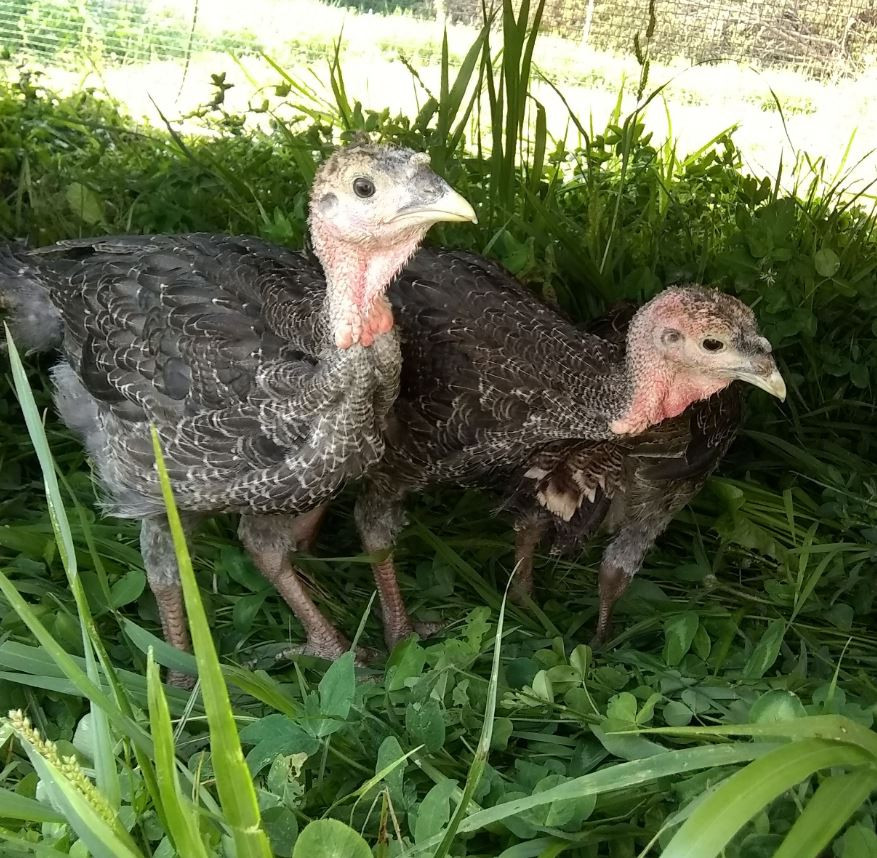
Chickens and turkeys are natural foragers and omnivores. They love bugs and leafy greens, in addition to their necessary diet of good, wholesome grains. We raise our birds out on pasture, where they can naturally forage for insects and leafy plant material. Chickens will even eat mice if they can find them!
Our laying hens are raised on pasture where they, too, find plenty of forage and protein to produce high quality, nutritious eggs.

When our laying hens are older and not laying so many eggs anymore, we put them out on pasture to "follow" the herd of cattle. They comb through the pastures where the cattle had grazed a few days prior, and use their feet to scratch apart the manure piles in their search for bugs to eat.
This act not only feeds the birds, but helps to break down the cow manure into the soil, faster, too.
Hogs

Pigs are incredible! They truly are. They are great soil builders, as they use their snouts like shovels to dig up the soil, searching for roots, nuts, insects, and other sources of food. This action helps to turn the soil over, and incorporate residual forage or compost into a deeper layer of the soil.
This is particularly true in spring, when accumulated bedding from winter shelters needs to be composted. Instead of using machinery to spread the organic materials, we let the hogs do it and they love it!
Hogs are also efficient eaters. They are not ruminants, like the cattle and sheep, and so, they, too, require grain like the chickens. However, out on pasture, they forage for greens, just like the other animals.
They also get to enjoy our household kitchen scraps, which is not only convenient, but truly helpful in speeding up the composting process so that those foods' nutrients can be returned back into the soil even more quickly.
And just for fun....
Cats
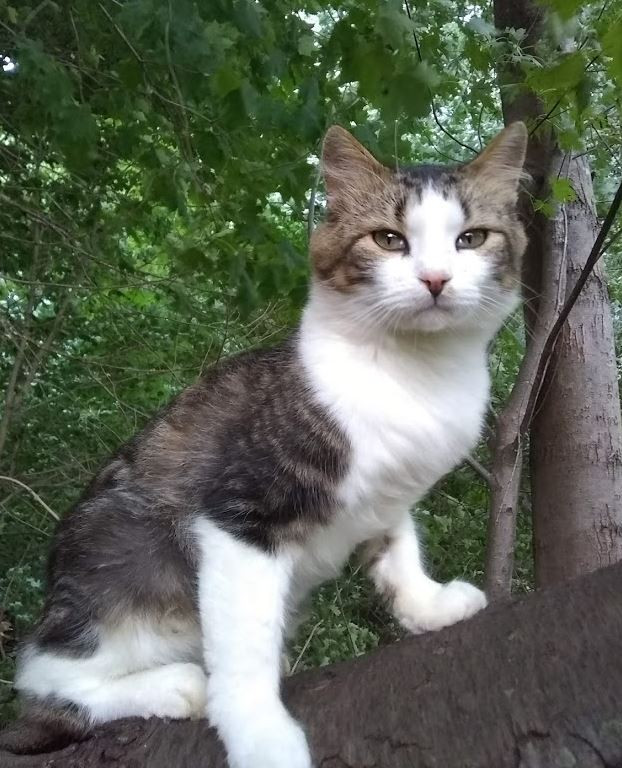
What's a farm without barn cats? Yes, we do have a few cats running around, but they do well to keep pesky mice and rats away from grain bins and hay mounds. You'll often find a cat or two sitting on a hay bale in summer, watching for mice to snatch and snack.
Dogs

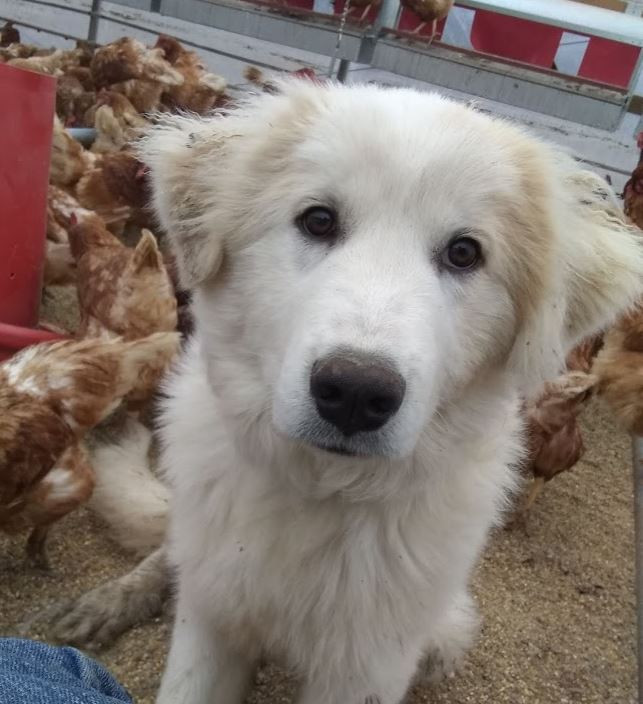
And of course, what's a home without a dog? We actually have four, Leo, Cassie, Dancer, and MJ, all of whom help guard our farm. The dogs work hard to guard the hens and sheep from predators and alert us to anything they think is worth knowing about! They are also quite good for bringing about a great smile after a long day's work. :)
From hogs to hens, sheep to cattle, and cats to dogs, each animal on our farm has it's place and it's role to help keep things moving in all the right directions. The roles these animals fill are similar to those which native animals, such as bison, ground birds, and others would have prior to European settlement. By this, our animals help to fill different niches in the ecosystem that weren't necessarily being filled, otherwise, thus helping to restore the land's function in a more natural way.




